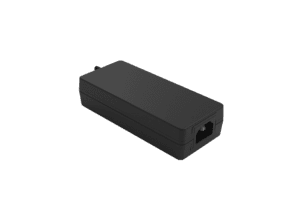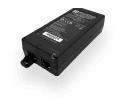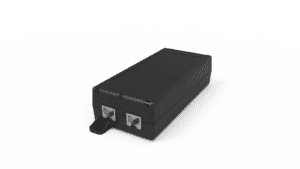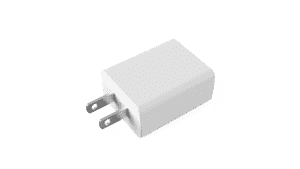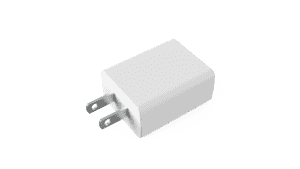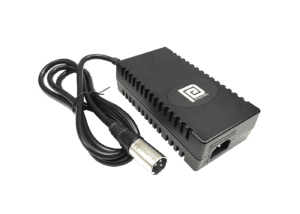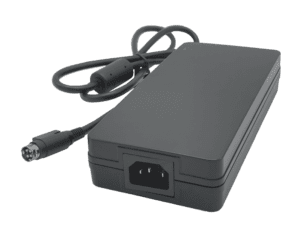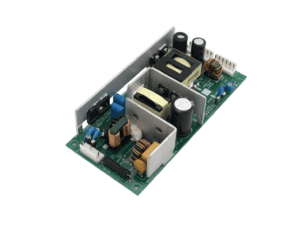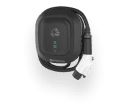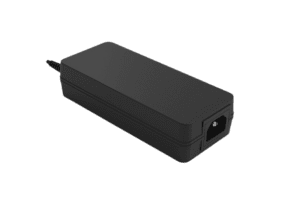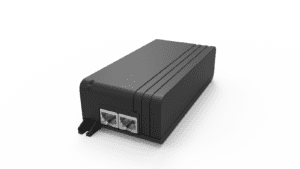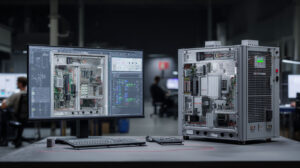BLOG
Exploring the IEEE 802.3bt Standard: Unlocking the Power of PoE++ Technology
QUICK LINKS

Power over Ethernet (PoE) technology has evolved significantly over the years, with the IEEE 802.3bt standard, also known as PoE++, marking a major advancement. This standard enhances power delivery capabilities and supports a broader range of network devices, making it a crucial component of modern network infrastructures. This comprehensive guide dives into the IEEE 802.3bt PoE++ standard, explaining its capabilities, benefits, and applications for advanced network deployments.
What is the IEEE 802.3bt Standard?
The IEEE 802.3bt standard, introduced in 2018, marks a significant advancement in Power over Ethernet (PoE) technology by greatly enhancing the power delivery capacity of Ethernet cables. Commonly referred to as PoE++, this innovative standard enables the transmission of up to 60 watts (Type 3) and an impressive 90 watts (Type 4) of power through standard network cabling. This capability opens up new possibilities for powering a wider range of devices, including those that require higher energy consumption, such as high-definition cameras, wireless access points, and advanced IoT devices. As a result, the IEEE 802.3bt standard not only expands the applications of PoE technology but also facilitates the integration of power-hungry devices in various industries, promoting greater flexibility and efficiency in network design and implementation.
Benefits and Features of the IEEE 802.3bt PoE++ Standard
The IEEE 802.3bt PoE++ standard offers several key features and benefits that enhance its capabilities and applications in modern networks.
Higher Power Delivery
One of the most significant features of the IEEE 802.3bt standard is its ability to deliver up to 90 watts of power over Ethernet cables. This increased power capacity supports a wider range of devices and applications, including high-performance wireless access points (WAPs), PTZ cameras, and digital signage, enabling organizations to deploy larger devices without the need for additional power sources.
Four-Pair Power Delivery
The IEEE 802.3bt standard utilizes all four pairs of wires in Ethernet cabling for power delivery, enhancing efficiency and reducing power loss. This method, known as Four Pair Power Delivery (4PPoE), allows for higher power levels (up to 60 watts or more) to be supplied to devices like access points and cameras, ensuring more reliable and consistent power transmission while improving the performance of connected devices and reducing downtime. This flexibility enhances network installation.
Backward Compatibility
The IEEE 802.3bt standard is designed to be fully compatible with previous PoE standards, specifically IEEE 802.3af and 802.3at. This backward compatibility ensures that organizations can seamlessly upgrade their network infrastructure without the need to replace existing PoE devices. It allows for greater flexibility in network design and the ability to incorporate newer technologies while still supporting legacy systems.
Simplified Network Infrastructure
By delivering both power and data over a single cable, IEEE 802.3bt simplifies network infrastructure. This reduces the complexity and cost of installations and maintenance, making it easier to deploy and manage network devices.
Top Applications of IEEE 802.3bt PoE++
The IEEE 802.3bt standard supports a wide range of applications, making it a versatile solution for various network environments.
High-Power IP Cameras: IEEE 802.3bt powers high-resolution IP cameras, enabling advanced features like pan-tilt-zoom (PTZ) and night vision. This simplifies installation by eliminating the need for separate power sources.
LED Lighting: Smart LED lighting systems leverage PoE++ for power and data delivery, allowing centralized control and programmability. This enhances energy efficiency and simplifies installation in commercial spaces.
Wireless Access Points: PoE++ supports a wider range of wireless access points, ensuring strong connectivity in large areas. This reduces installation complexity and eliminates the need for nearby electrical outlets.
Digital Signage: Digital displays benefit from PoE++, which provides power and data through a single cable. This simplifies installation and enables easier content updates, making it ideal for retail and public spaces.
Video Conferencing Systems: PoE++ powers all components of video conferencing setups, including cameras, speakers and microphones. This ensures reliable operation and reduces cable clutter.
Point of Sale (POS) Terminals: Retail environments can use PoE++ to power POS systems, streamlining installation and allowing for flexible terminal placement without additional power outlets.
Industrial Automation: PoE++ supports devices in industrial settings, including robotics and sensors, simplifying infrastructure while enhancing operational efficiency and productivity.
Smart Home Systems: PoE++ enables smart home devices to receive power and communicate via a single connection, simplifying installation and improving reliability for various applications.
Best Practices for Deploying IEEE 802.3bt PoE++
Deploying IEEE 802.3bt PoE++ in your network requires careful planning and execution to ensure optimal performance and reliability.
Conduct a Network Assessment
Before deploying PoE++, conduct a thorough network assessment to identify power requirements, device compatibility, and potential challenges. This helps in designing a robust PoE network that meets business needs.
Choose the Right Equipment
Selecting the right PoE equipment, including switches, injectors, and cabling, is crucial for a successful implementation. Ensure that all components are compatible with your devices and support the IEEE 802.3bt standard.
Plan for Scalability
Design your PoE++ network with scalability in mind. Consider future expansion needs and choose equipment that can accommodate additional devices and increased power demands.
Optimize Network Design
Plan network layouts to maximize coverage and minimize power loss. Strategically designing your network can help ensure efficient power and data transmission, reducing the risk of performance issues.
Monitor Network Performance
Regularly monitor network performance to ensure reliable operation and identify potential issues. This proactive approach helps in maintaining optimal functionality and quickly addressing any problems that arise.
Use High-Quality Cabling
Invest in high-quality Ethernet cables to ensure reliable power and data transmission. High-quality cabling minimizes signal loss and maintains network integrity.
By following these best practices, you can deploy IEEE 802.3bt PoE++ effectively, ensuring a robust and scalable network that meets your current and future needs.
Comparison with Other PoE Standards
The IEEE 802.3bt standard is one of several PoE standards, each with its own specifications and use cases. Comparing IEEE 802.3bt with other PoE standards helps in understanding its unique advantages and limitations.
IEEE 802.3af (PoE)
The IEEE 802.3af standard supports up to 15.4 watts of power delivery, making it suitable for many network devices. However, it may not provide enough power for more demanding applications such as PTZ cameras and advanced wireless access points.
IEEE 802.3at (PoE+)
The IEEE 802.3at standard supports up to 25.5 watts of power, allowing for more power-hungry devices compared to IEEE 802.3af. It is suitable for applications requiring moderate power levels, such as advanced wireless access points and VoIP phones.
IEEE 802.3bt (PoE++)
The IEEE 802.3bt standard supports up to 60 watts (Type 3) and 90 watts (Type 4) of power. This standard enables the deployment of even more powerful devices and advanced applications, including lighting and industrial automation.
Future Trends in PoE Technology
As technology advances, new trends in PoE are emerging that offer even greater potential for modern networks.
Higher Power Standards
Emerging PoE standards, such as IEEE 802.3bt (PoE++), support higher power levels, enabling the use of more powerful devices and advanced applications.
AI and IoT Integration
Integrating PoE with AI and IoT technologies enhances the capabilities of smart networks, providing real-time data, predictive analytics, and automated controls.
Enhanced Security Measures
Future trends in PoE include enhanced security measures to protect against cyber threats, ensuring the reliable and secure operation of PoE networks.
Phihong’s Role in Advancing IEEE 802.3bt PoE++ Solutions
Phihong has been a key player in driving forward the evolution of PoE technology. As the sole power supply manufacturer actively engaged in the IEEE PoE Committees and consistently contributing to future IEEE PoE standards discussions, Phihong stands at the forefront of innovation in this field. Therefore, when deciding on what PoE product suits your business, it’s essential to recognize Phihong’s prominent leadership position in the PoE industry.
Innovative Product Development
Phihong has consistently developed new PoE++ products that meet the evolving needs of the market. These products include PoE++ injectors, media converters, and splitters, each offering unique features and benefits. Phihong PoE++ injectors boast an average efficiency exceeding 88%, meeting Department of Energy (DoE) Level VI compliance requirements. Moreover, Phihong future-proofs many of its PoE products to meet forthcoming DoE Level VII requirements, demonstrating Phihong’s proactive approach to manufacturing.
Industry Collaboration
Phihong collaborates with industry organizations and standards bodies to advance PoE technology and ensure interoperability. This collaboration ensures that Phihong’s products meet the highest standards of quality and performance.
Proven Durability
In addition to high efficiency, Phihong PoE products are tested to perform under full load at 40°C for a duration of one year and at 25°C for three years, highlighting their reliability and durability.

Contact Our Team Today!
Our dedicated sales team and international partners are prepared to support you with your latest projects and initiatives globally.
Explore More with Phihong USA
As we conclude our exploration of PoE technology, it’s evident how these innovations are streamlining power and data integration across various industries. Phihong USA stands at the forefront of this technological advancement, offering a diverse range of power solutions designed to meet the evolving needs of modern industries.
Phihong USA’s extensive product lineup includes:
- Power over Ethernet (PoE) Solutions: Delivering reliable power and data transmission over a single cable, ideal for simplifying network installations and reducing costs.
- AC/DC Adapters and Power Supplies: From compact adapters to industrial-grade power supplies, Phihong provides solutions that ensure efficiency and reliability in various applications.
- Battery Chargers: Customizable chargers for lithium-ion and lead-acid batteries, supporting a wide range of power requirements for mobility and industrial applications.
- Medical Power Supplies: Specialized power solutions designed to meet the stringent requirements of the healthcare industry, ensuring safety and reliability.
Phihong USA is committed to innovation and excellence, continually developing products that meet the highest standards of performance and reliability. Their global reach and dedication to customer support make them a trusted partner in powering the future.
Here are some useful links to explore Phihong USA’s offerings further and bring in new potential clients:
Visit Phihong USA to discover how their advanced power solutions can support your business needs. Whether you’re looking to upgrade your network, or find reliable power supplies, Phihong USA has you covered.
By choosing Phihong USA, you’re partnering with a leader in power technology, ensuring your operations run smoothly and efficiently with top-tier power solutions.
FAQ
What is the IEEE 802.3bt standard and why is it important?
The IEEE 802.3bt standard, introduced in 2018, is an advanced Power over Ethernet (PoE) standard also known as PoE++. It significantly increases the power delivery capacity of Ethernet cables, supporting up to 60 watts (Type 3) and 90 watts (Type 4). This standard is important because it enables the use of more power-hungry devices and expands the applications of PoE technology. IEEE 802.3bt enhances power delivery efficiency, supports advanced network devices, and future-proofs networks to accommodate emerging technologies.
What are the key features of the IEEE 802.3bt standard?
The IEEE 802.3bt standard provides several key features, including higher power delivery of up to 90 watts, four-pair power delivery, and advanced power management. Higher power delivery supports more power-hungry devices and applications. Four-pair power delivery enhances efficiency and reduces power loss by utilizing all four pairs of wires in Ethernet cabling. Advanced power management features optimize power delivery and reduce energy consumption, ensuring efficient and reliable operation.
How does IEEE 802.3bt compare to other PoE standards?
The IEEE 802.3bt standard supports the highest power levels among PoE standards, up to 60 watts (Type 3) and 90 watts (Type 4). In comparison, the IEEE 802.3af standard supports up to 15.4 watts, making it suitable for many network devices but not for more demanding applications. The IEEE 802.3at standard (PoE+) supports up to 25.5 watts, enabling the use of more power-hungry devices compared to IEEE 802.3af. IEEE 802.3bt expands the range of PoE applications by supporting more powerful devices and advanced network solutions.
What are the benefits of implementing IEEE 802.3bt in modern networks?
Implementing the IEEE 802.3bt standard in modern networks offers numerous benefits, including support for advanced devices, simplified network infrastructure, and future-proofing networks. The increased power capacity supports sophisticated network devices such as high-performance wireless access points, PTZ cameras with heaters, and digital signage. The standard simplifies network installations by delivering both power and data over a single cable, reducing complexity and costs. It also helps future-proof networks by providing the power capacity needed to support emerging technologies and applications.

